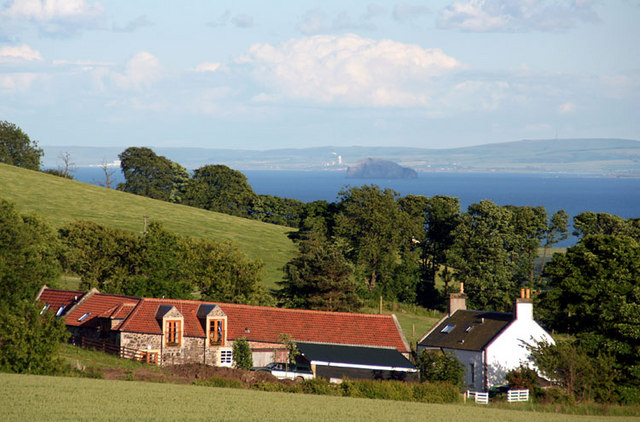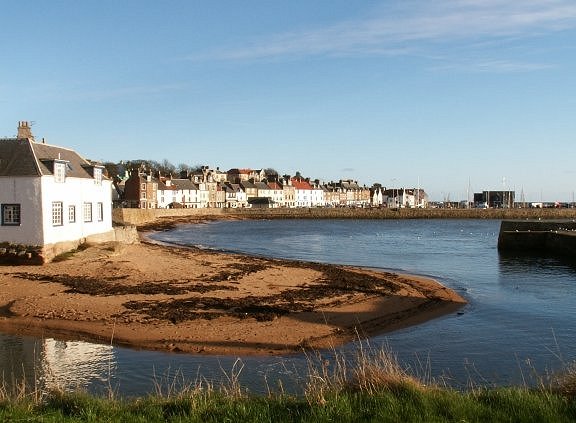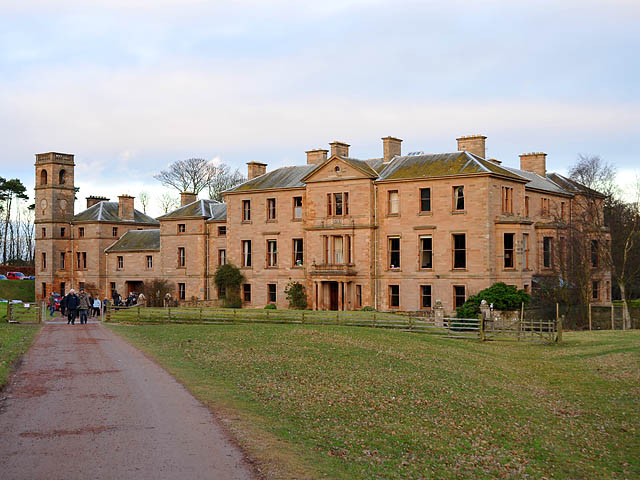|
Carnbee, Fife
Carnbee is a village and rural parish in the inland part of the East Neuk of Fife, Scotland. Location It lies to the north of Anstruther and Pittenweem. There is a very small village and the church (dating from 1793) stands amid agricultural land. The hamlet of Arncroach lies within this parish. It has a nearby cheese factory. The name Carnbee derives from Scottish Gaelic. The second element, -bee, is obscure but probably derives from the Gaelic ''beith'' meaning 'birch' giving: "the cairn of (the) birch tree". The parish includes Kellie Castle, formerly the seat of the Earls of Kellie and home to the Lorimer family, including Robert Lorimer Sir Robert Stodart Lorimer, KBE (4 November 1864 – 13 September 1929) was a prolific Scottish architect and furniture designer noted for his sensitive restorations of historic houses and castles, for new work in Scots Baronial and Got ... who designed the pulpit in the parish church and the Carnbee War Memorial. References ... [...More Info...] [...Related Items...] OR: [Wikipedia] [Google] [Baidu] |
Fife
Fife (, ; gd, Fìobha, ; sco, Fife) is a council area, historic county, registration county and lieutenancy area of Scotland. It is situated between the Firth of Tay and the Firth of Forth, with inland boundaries with Perth and Kinross (i.e. the historic counties of Perthshire and Kinross-shire) and Clackmannanshire. By custom it is widely held to have been one of the major Pictish kingdoms, known as ''Fib'', and is still commonly known as the Kingdom of Fife within Scotland. A person from Fife is known as a ''Fifer''. In older documents the county was very occasionally known by the anglicisation Fifeshire. Fife is Scotland's third largest local authority area by population. It has a resident population of just under 367,000, over a third of whom live in the three principal towns, Dunfermline, Kirkcaldy and Glenrothes. The historic town of St Andrews is located on the northeast coast of Fife. It is well known for the University of St Andrews, the most ancient univers ... [...More Info...] [...Related Items...] OR: [Wikipedia] [Google] [Baidu] |
North East Fife (UK Parliament Constituency)
North East Fife is a county constituency in Fife, Scotland, represented in the House of Commons of the UK Parliament by Wendy Chamberlain of the Liberal Democrats since the 2019 general election. The seat was created in 1983, and was held by the Conservative Party for four years, before being represented by Menzies Campbell from 1987 to 2015. Campbell was elected as a member of the Liberal Party, which later merged with the Social Democratic Party to form the Liberal Democrats. At the 2015 general election, the seat was gained by Stephen Gethins of the Scottish National Party (SNP). Gethins held his seat at the 2017 general election by just two votes over Elizabeth Riches of the Liberal Democrats, making the seat the most marginal in the United Kingdom. In the 2019 general election, Chamberlain defeated Gethins to regain the seat for the Liberal Democrats; this was the SNP's only loss of the election. Boundaries 1983–2005: North East Fife District. 2005–present: T ... [...More Info...] [...Related Items...] OR: [Wikipedia] [Google] [Baidu] |
North East Fife (Scottish Parliament Constituency)
North East Fife is a constituency of the Scottish Parliament ( Holyrood) covering part of the council area of Fife. It elects one Member of the Scottish Parliament (MSP) by the plurality (first past the post) method of election. It is one of nine constituencies in the Mid Scotland and Fife electoral region, which elects seven additional members, in addition to the nine constituency MSPs, to produce a form of proportional representation for the region as a whole. The seat has been held since the 2016 Scottish Parliament election by Willie Rennie, the former leader of the Scottish Liberal Democrats. Electoral region The other eight constituencies of the Mid Scotland and Fife region are Clackmannanshire and Dunblane, Dunfermline, Cowdenbeath, Kirkcaldy, Mid Fife and Glenrothes, Perthshire North, Perthshire South and Kinross-shire and Stirling. The region covers all of the Clackmannanshire council area, all of the Fife council area, all of the Perth and Kinross cou ... [...More Info...] [...Related Items...] OR: [Wikipedia] [Google] [Baidu] |
East Neuk
The East Neuk () or East Neuk of Fife is an area of the coast of Fife, Scotland. "Neuk" is the Scots word for nook or corner, and the East Neuk is generally accepted to comprise the fishing villages of the most northerly part of the Firth of Forth and the land and villages slightly inland therefrom. In effect, this means that part to the south of a line drawn parallel to the coast from just north of Earlsferry to just north of Crail, approximately in area. As such it would include Elie and Earlsferry, Colinsburgh, St Monans, Pittenweem, Arncroach, Carnbee, Anstruther, Cellardyke, Kilrenny, Crail and Kingsbarns and the immediate hinterland, as far as the upland area known as the Riggin o Fife. The area houses a Cold War era bunker near Crail. Built in the late 1950s to be a regional seat of government in the event of a nuclear war Nuclear warfare, also known as atomic warfare, is a theoretical military conflict or prepared political strategy that deploys nuclear wea ... [...More Info...] [...Related Items...] OR: [Wikipedia] [Google] [Baidu] |
Anstruther
Anstruther ( sco, Ainster or Enster ; gd, Ànsruthair) is a small coastal resort town in Fife, Scotland, situated on the north-shore of the Firth of Forth and south-southeast of St Andrews. The town comprises two settlements, Anstruther Easter and Anstruther Wester, which are divided by a stream, the Dreel Burn. With a population of 3,500, it is the largest community on the Firth of Forth's north-shore coastline known as the East Neuk. To the east, it merges with the village of Cellardyke. Description Founded as a fishing village, Anstruther is home to the Scottish Fisheries Museum. Recreational vessels are now moored in the harbour, and a golf course is situated near the town. Anstruther Pleasure Cruises operate sightseeing/wildlife cruises from the harbour to the Isle of May, the UK's primary puffin location, on board the vessel the ''May Princess'' from April to October. An abundance of other wildlife, including seal colonies, also inhabit the island. The Waid Academy ... [...More Info...] [...Related Items...] OR: [Wikipedia] [Google] [Baidu] |
Pittenweem
Pittenweem ( ) is a fishing village and civil parish in Fife, on the east coast of Scotland. At the 2001 census, it had a population of 1,747. Etymology The name derives from Pictish and Scottish Gaelic. "Pit-" represents Pictish ''pett'' 'place, portion of land', and "-enweem" is Gaelic ''na h-Uaimh'', 'of the Caves' in Gaelic, so "The Place of the Caves". The name is rendered ''Baile na h-Uaimh'' in modern Gaelic, with ''baile'', 'town, settlement', substituted for the Pictish prefix. The cave in question is almost certainly St Fillan's cave. History The settlement has existed as a fishing village since early medieval times. The oldest structure, St. Fillan's Cave, dates from the 7th century. An Augustinian priory moved here from the Isle of May in the 13th century, but there was already a church at that time. Pittenweem Parish Church (which is attached to the local tolbooth) has a Norman doorway dating to before 1200. The gatehouse to the east is 15th century. The priory ... [...More Info...] [...Related Items...] OR: [Wikipedia] [Google] [Baidu] |
Arncroach
Arncroach is a small village situated in the east of Fife, four miles inland of the fishing village of Pittenweem and around 10 miles away from St Andrews, on the east coast of Scotland. The village green is named after Louise Lorimer. Arncroach is within the parish of Carnbee. Situated about 1/4 of a mile from Arncroach is Kellie Castle, formerly the seat of the Earl of Kellie, and is also where the famous Lorimer family lived. The village saw the installation of the first wind turbine in the East Neuk area of Fife, directly adjacent to the Gillingshill Nature Reserve. Geology and geography Arncroach is situated at the foot of Kellie Law, a small hill which is visible from the Firth of Forth. The village has a population of around 120 people. Notable residents Furniture maker, William Wheeler of Arncroach. Designer and maker of Chippendale and Gossip Chairs circa 1880. Education Arncroach once had two schools, despite it only being a very small village. One was a boy ... [...More Info...] [...Related Items...] OR: [Wikipedia] [Google] [Baidu] |
Scottish Gaelic
Scottish Gaelic ( gd, Gàidhlig ), also known as Scots Gaelic and Gaelic, is a Goidelic language (in the Celtic branch of the Indo-European language family) native to the Gaels of Scotland. As a Goidelic language, Scottish Gaelic, as well as both Irish and Manx, developed out of Old Irish. It became a distinct spoken language sometime in the 13th century in the Middle Irish period, although a common literary language was shared by the Gaels of both Ireland and Scotland until well into the 17th century. Most of modern Scotland was once Gaelic-speaking, as evidenced especially by Gaelic-language place names. In the 2011 census of Scotland, 57,375 people (1.1% of the Scottish population aged over 3 years old) reported being able to speak Gaelic, 1,275 fewer than in 2001. The highest percentages of Gaelic speakers were in the Outer Hebrides. Nevertheless, there is a language revival, and the number of speakers of the language under age 20 did not decrease between the 2001 and ... [...More Info...] [...Related Items...] OR: [Wikipedia] [Google] [Baidu] |
Kellie Castle
Kellie Castle is a castle just outside Arncroach and below the dominant hill in the area, Kellie Law. it is about 4 kilometres north of Pittenweem in the East Neuk of Fife, Scotland. Early history The earliest records of Kellie go back to 1150 where it is mentioned in a charter issued by King David I. The first known owner was Robert of London, the illegitimate son of King William the Lion. By 1266 Kellie had passed to the Siward family, who had hailed from Northumbria and had assisted King Malcolm Canmore to overthrow Macbeth. The Siewards supported England during the wars of independence (1296-1328) and as a result Sir Richard Sieward forfeited his lands in Scotland after Bannockburn. However his daughter Helena Sieward, “Lady Kellie” retained Kellie. None of the buildings they occupied appear to have survived. In about 1360 Helena, or Elena, assigned Kellie to her kinsman Walter Olifard (or Oliphant) of Aberdalgie who was married to Elizabeth, a daughter of Robert the ... [...More Info...] [...Related Items...] OR: [Wikipedia] [Google] [Baidu] |
Earl Of Kellie
The title Earl of Kellie or Kelly is a title in the Peerage of Scotland, created in 1619 for Sir Thomas Erskine, who was Captain of the Guard and Groom of the Stool for James VI. It is named after Barony of Kellie in Fife, Scotland. Since 1875, it has been held jointly with the Earldom of Mar (1565 creation). The family seat is Hilton Farm, near Alloa, Clackmannanshire. History The Earldom of Kellie was united with the Earldom of Mar in 1835, when the 26th Earl of Mar became also the 11th Earl of Kellie. At the death of that Earl in 1866, the Earldom of Kellie and the family's estates passed to Walter Erskine, the cousin of the late Earl, and his heir-male. Meanwhile, it was assumed that the Earldom of Mar passed to John Francis Goodeve, the late Earl's nephew, and his heir-general. Goodeve changed his name to Goodeve Erskine; his claim was agreed upon by most individuals. He even participated in the election of representative peers for the Peerage of Scotland. However, the ... [...More Info...] [...Related Items...] OR: [Wikipedia] [Google] [Baidu] |
Robert Lorimer
Sir Robert Stodart Lorimer, KBE (4 November 1864 – 13 September 1929) was a prolific Scottish architect and furniture designer noted for his sensitive restorations of historic houses and castles, for new work in Scots Baronial and Gothic Revival styles, and for promotion of the Arts and Crafts movement. Early life Lorimer was born in Edinburgh, the son of Hannah Stodart (1835–1916) and James Lorimer, who was Regius Professor of Public Law at University of Edinburgh from 1862 to 1890. In his youth the family lived at 21 Hill Street, a Georgian house in Edinburgh's South Side, close to where his father worked at Old College. From 1877 to 1882 he was educated at Edinburgh Academy, going on to study at University of Edinburgh from 1882 to 1885, however he left without completing his studies. He was part of a talented family, being the younger brother of painter John Henry Lorimer, and father to the sculptor Hew Lorimer. In 1878 the Lorimer family acquired the lease of ... [...More Info...] [...Related Items...] OR: [Wikipedia] [Google] [Baidu] |
Villages In Fife
A village is a clustered human settlement or community, larger than a hamlet but smaller than a town (although the word is often used to describe both hamlets and smaller towns), with a population typically ranging from a few hundred to a few thousand. Though villages are often located in rural areas, the term urban village is also applied to certain urban neighborhoods. Villages are normally permanent, with fixed dwellings; however, transient villages can occur. Further, the dwellings of a village are fairly close to one another, not scattered broadly over the landscape, as a dispersed settlement. In the past, villages were a usual form of community for societies that practice subsistence agriculture, and also for some non-agricultural societies. In Great Britain, a hamlet earned the right to be called a village when it built a church. [...More Info...] [...Related Items...] OR: [Wikipedia] [Google] [Baidu] |






